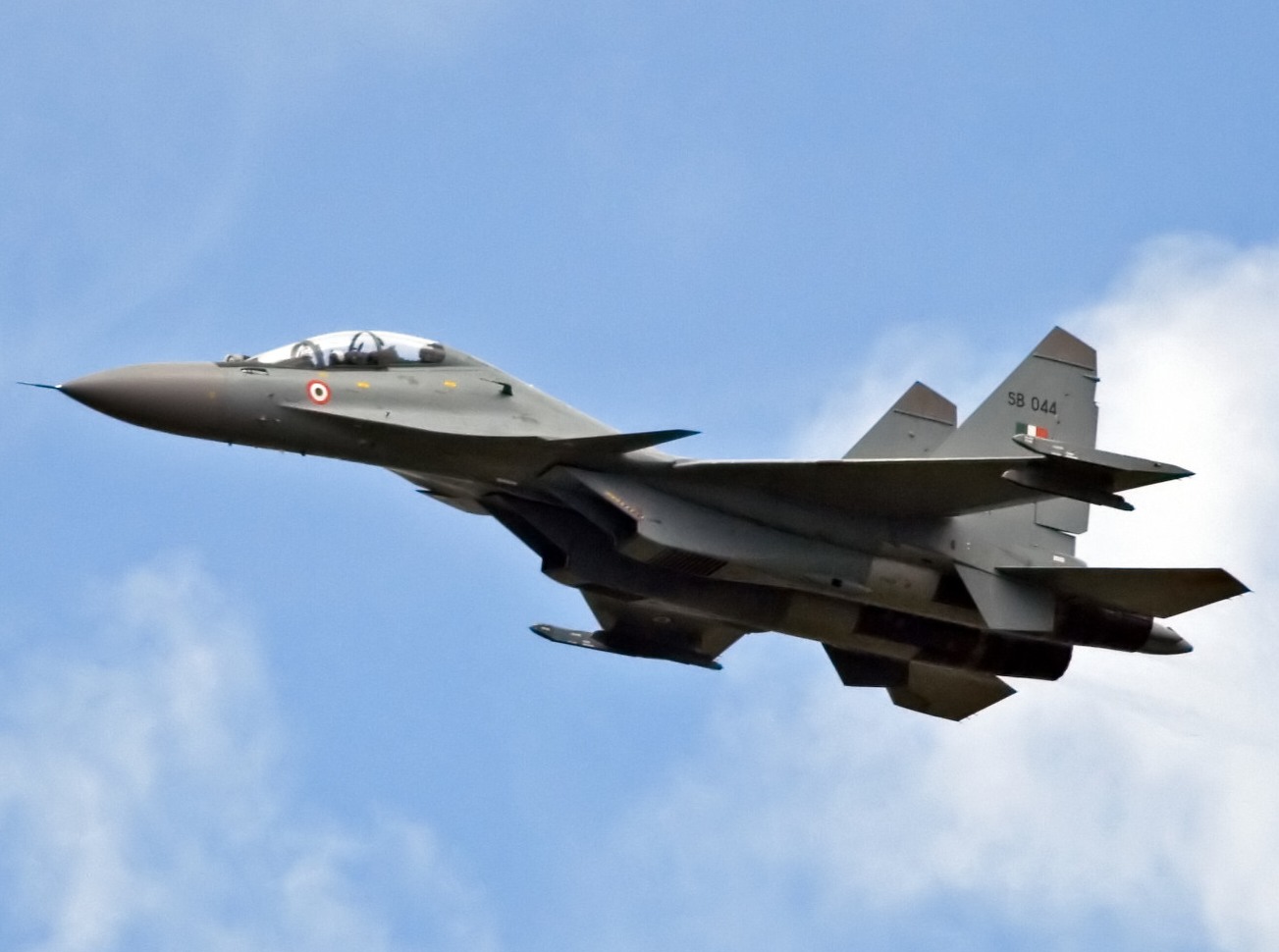Nav
FULL MEMBER

- Joined
- May 11, 2010
- Messages
- 1,089
- Reaction score
- 1
- Country
- Location
In assessing the Flanker against the Super Hornet it isclear from the outset that theadvantage in firepower, speed, raw agility, range andmanoeuvre performance goes to the Flanker. Given that operational Flankers span variants from B throughH, and type designations from Su-27S, through Su-30sto Su-35s, there are a wide range of configurations possible.
This has been further complicated by the Russian propensity to customise configurations for clients, and perform ongoing technology upgrades to operational variants. Anotherbyproduct of Russian marketing is that the label Su-30 spans an upgraded Su-27SKM (Su-30KI) up to theIndian Su-30MKI, which uses extensive ly features demonstrated in the Su-37.
In terms of aerodynamic performance the Flanker sits broadly in the class of the F-15 family, with similar thrust / weight ratios at similar weights. The empty weight of Flanker variants ranges between 37,240 - 40,800 lb and internal fuel capacities between 20,750 - 22,600 lb .
At this time all production Flankers are flying with variants of the Saturn/SalyutAl-31F, which deliver static sea level thrust ratings in the 27 klb to 32 klb class, depending on the variant. This engine is comparable to the latest P&W F100 and GE F110 series engines, outperforming the smaller F404 series. In terms of supersonic speed, supersonic and subsonic acceleration and climb performance, the Super Hornet cannot compete with any Flanker variant.
High speed turning performance, where thrust limited, also goes to the Flanker, as does supersonic manoeuvre performance. TheSuper Hornet is severely handicapped by its lower combat thrust/weight ratio, and hybrid wing planform. It isworth observing that high alpha trim drag and pitch rates of the canard equippedFlanker variants, such as the Su-33 and Su-30MKI, will be superior to the versions without canards.
This has been further complicated by the Russian propensity to customise configurations for clients, and perform ongoing technology upgrades to operational variants. Anotherbyproduct of Russian marketing is that the label Su-30 spans an upgraded Su-27SKM (Su-30KI) up to theIndian Su-30MKI, which uses extensive ly features demonstrated in the Su-37.
In terms of aerodynamic performance the Flanker sits broadly in the class of the F-15 family, with similar thrust / weight ratios at similar weights. The empty weight of Flanker variants ranges between 37,240 - 40,800 lb and internal fuel capacities between 20,750 - 22,600 lb .
At this time all production Flankers are flying with variants of the Saturn/SalyutAl-31F, which deliver static sea level thrust ratings in the 27 klb to 32 klb class, depending on the variant. This engine is comparable to the latest P&W F100 and GE F110 series engines, outperforming the smaller F404 series. In terms of supersonic speed, supersonic and subsonic acceleration and climb performance, the Super Hornet cannot compete with any Flanker variant.
High speed turning performance, where thrust limited, also goes to the Flanker, as does supersonic manoeuvre performance. TheSuper Hornet is severely handicapped by its lower combat thrust/weight ratio, and hybrid wing planform. It isworth observing that high alpha trim drag and pitch rates of the canard equippedFlanker variants, such as the Su-33 and Su-30MKI, will be superior to the versions without canards.



